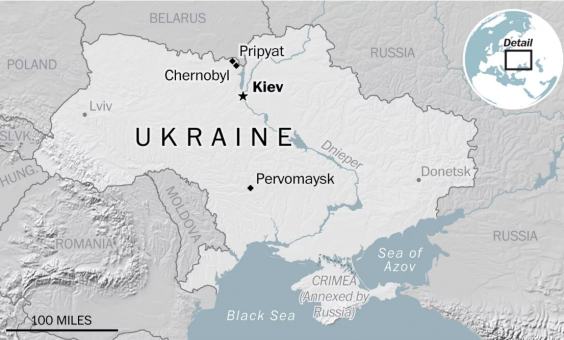People are flocking to the Ukraine to learn more about the Cold War sites that could have destroyed the planet

The button that could have started a nuclear holocaust is grey – not red.
I learned this after climbing into a nuclear rocket command silo, 12
floors below ground, and sitting in the same green chair at the same
yellow, metal console at which former Soviet officers once presided.
Here, they practiced entering secret codes into their grey keyboards,
pushing the launch button and turning a key – all within seven seconds –
to fire up to 10 ballistic missiles. The officers never knew what day
their practice codes might become real, nor did they know their targets.
This base in Pervomaysk, Ukraine – about a four-hour drive from Kiev –
once had 86 intercontinental ballistic missiles capable of destroying
cities in Europe and the United States. Though the nuclear warheads have
been removed, the command silo with much of its equipment, giant trucks
that carried the rockets to the base and an empty silo were preserved
so that people could see what had been secretly going on at nuclear
missile bases in the former Soviet Union. The museum’s collection
includes the R-12/SS-4 Sandal missile similar to those involved in the
Cuban missile crisis and the RS-20A/SS-18 Satan, the versions of which
had several hundred times the destructive power of the bomb dropped on
Hiroshima.
Data: 01.08.2017
Fonte: www.independent.co.uk



















Nessun commento:
Posta un commento